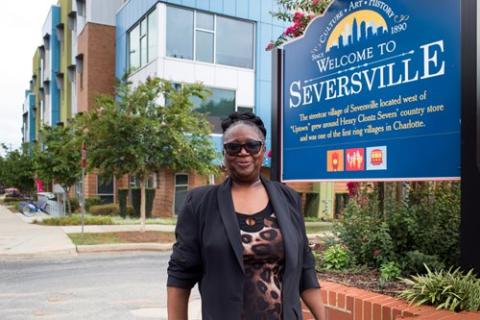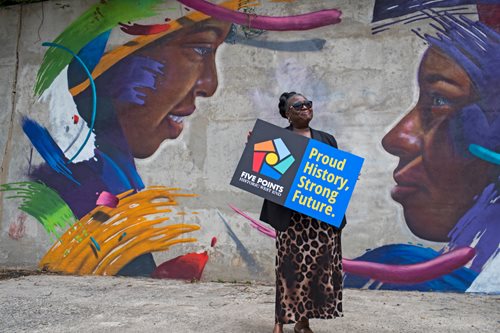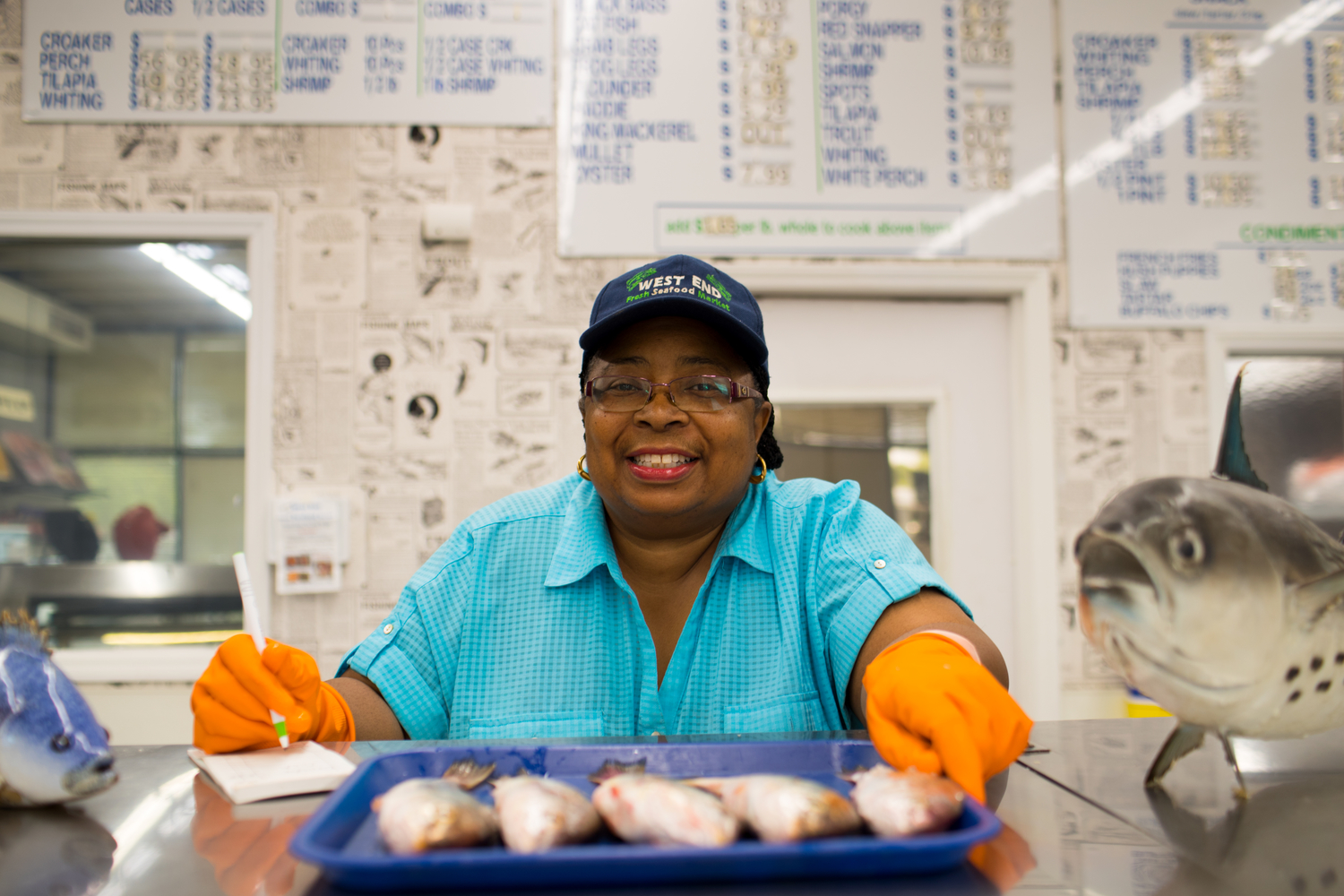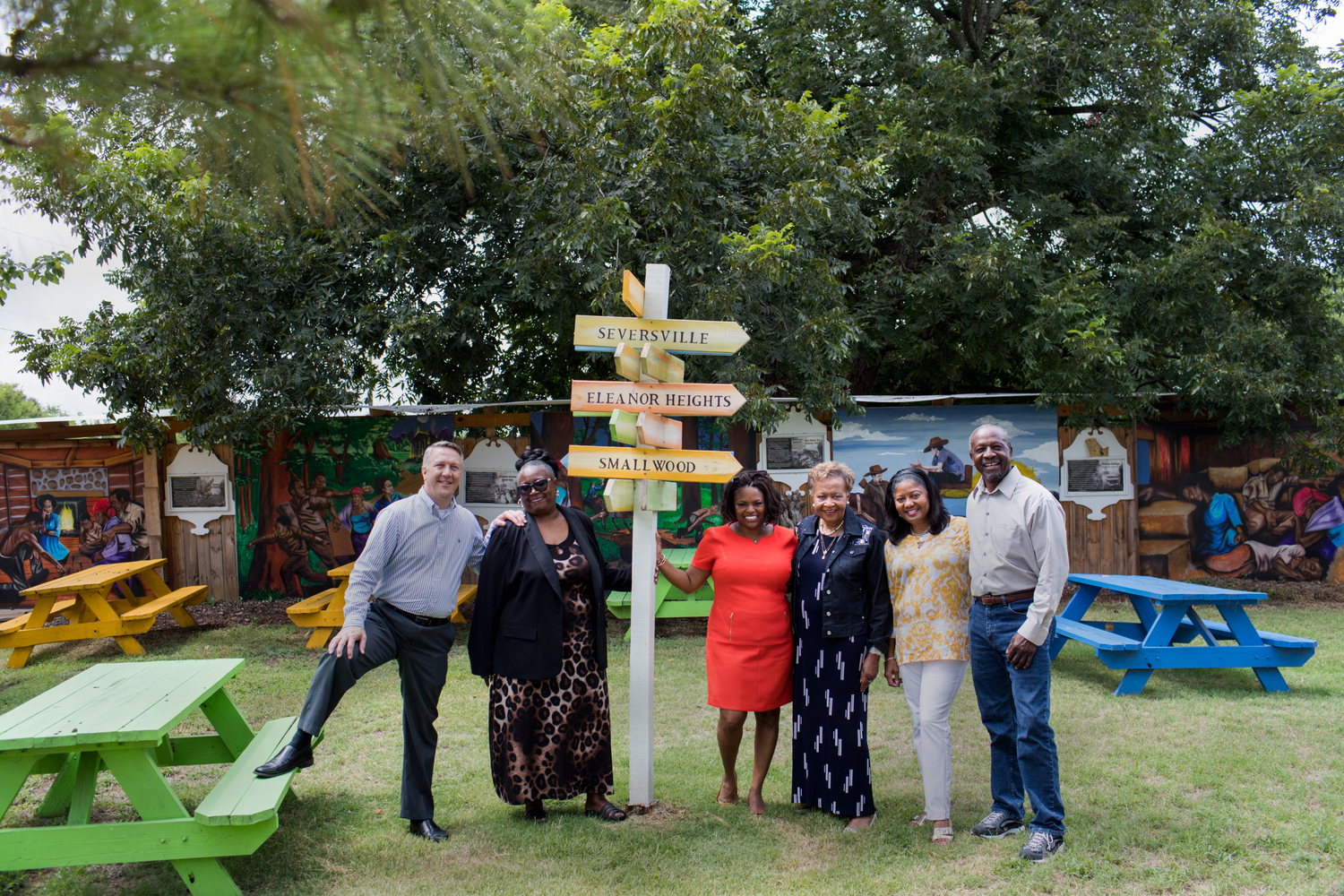Image

J’Tanya Adams will do whatever it takes to get things done. After founding a nonprofit dedicated to promoting the economic development of her historic neighborhood, Adams went even further and ran for the Charlotte, North Carolina, city council. Although she lost, it was by a razor-thin margin of 21 votes—the closest race in the town’s history.
“I’m not a politician,” says the recipient of one of NeighborWorks America's 2018 Dorothy Richardson Awards for Resident Leadership. “I don’t have a political network, I didn’t have money for radio and TV, and I wasn’t backed by lobbying groups. I am an advocate for all people—especially the marginalized and the low- to moderate-income, because our city took off and left them behind. I ran against a ‘machine’ and almost made it. The race proved that ‘regular’ people are more powerful than we realize.”
Hardscrabble roots
A crucial reason for Adams’ popularity is her hardscrabble roots; she knows what it’s like to struggle. The sharecropper’s granddaughter became a single parent before she finished college, raising two boys on her own in Section 8 rental housing. But she refused to allow that “life-altering decision” to pull her down, working and going to school at the same time.“I know what it’s like to have to stretch meals with franks, potatoes and grits just to get by,” Adams recalls. “I worked as many as three minimum-wage jobs at a time and took classes any free moment I had. They didn’t offer courses online back then, which is a time-saving game changer now.”
Leadership potential has a tendency to shine through no matter what, however, and Adams landed a job in the IT field even before she graduated. Within six months, she was able to afford market-rate housing and not too long after, acquired her first home. Later, she made another leap of faith and purchased two lots of land in Seversville—a neighborhood in the city’s oldest African-American corridor that had been sinking into decline for decades.
Seeing the diamond in the rough
 “Back then, people told me, ‘Oh, you don’t want to go there,’ because of the crime, drugs, and the lack of basics like healthy food and health care,” Adams recalls. “My dad had a fit; he was scared for me and wanted me to invest elsewhere. But I felt, in my heart, that one day the West End could rise again. It’s only about two blocks from center city, after all. I was determined to live someplace with historical and cultural significance, and I wanted to be part of bringing about positive change.”
“Back then, people told me, ‘Oh, you don’t want to go there,’ because of the crime, drugs, and the lack of basics like healthy food and health care,” Adams recalls. “My dad had a fit; he was scared for me and wanted me to invest elsewhere. But I felt, in my heart, that one day the West End could rise again. It’s only about two blocks from center city, after all. I was determined to live someplace with historical and cultural significance, and I wanted to be part of bringing about positive change.”Adams was right about the area’s potential. Homes used to sell for $50,000, she says; today, even a “tear-down” is priced at about $200,000. Houses in good shape sell for $450,000-$500,000. Instead, the challenge is making sure that long-term, lower-income residents can afford to stay.
“Our retired residents have spent most of their years fighting the crack epidemic and its ills that ruined the neighborhood in the midst of disinvestment,” explains Adams. “When the drug houses were acquired and it was quiet, the seniors thought they were done. They didn’t see gentrification coming until it was upon them.”
Fighting the negative effects of gentrification
Working to help them is how Adams first became involved with NeighborWorks member Charlotte-Mecklenburg Housing Partnership (CMHP). Adams helped residents understand how to assess the value of their homes, negotiate a fair selling price, take advantage of tax deferrals, enroll in home-repair programs and otherwise protect their assets.Some of the residents were skeptical and resisted Adams’ mobilization efforts at first because she wasn’t raised in the neighborhood and her style reflected a sense of urgency. Initially, she was “respectful and cautious.” But valuable time was lost and she learned that “while you want to preserve people’s dignity as best you can, you also need to do what you know is right.”

“It was an opportunity for farmers and artists and a small-business incubator at the same time. We were working to start a prepared-food business, because we don't have restaurants here either,” Adams explains. “For anything you can imagine that you might want, other than a piece of chicken, you have to drive somewhere else to get it. And then you're supplying or supporting someone else's economy, not your own. So a lot of money was leaving our corridor.”
Unfortunately, the recession hit and the sales weren’t enough to support all of the vendors. The market closed in 2012. So, Adams went back to the drawing board. The result was Mosaic Village. The local university needed dorms, so it became the anchor tenant on floors two through four of a new building on the lot once occupied by the market. On the roof, there's a skyline terrace. A salon and spa occupy the ground floor. The city also invested in a parking garage.
“We generated enough buzz to say, ‘Yes, indigenous residents are still here and we are ready, have always been ready, and still deserve to have this investment',” Adams says proudly. On the lot next door, a park/art space was created, featuring a performance stage and picnic tables and marked by a mural depicting the Underground Railroad.

The organizing for all of this work was done by the Historic West End Partners, a nonprofit organization Adams founded and for which she now serves as president.
“Art is very powerful; it’s a way for people to express themselves, to bond and to solve problems. Although I'm not an artist myself, I respect what it brings to a community, especially this historic African-American neighborhood,” Adams explains. “There is so much art available that people don't see because there's not a space in which to display it.”
Not one to stop looking for new challenges, Adams now is active in a group that is activating two historic trollies that had sat for years in storage and soon will be back in service. At the same time, they are advocating for the Lynx Gold Line, a modern streetcar that will run through the center of the West End and serve as a catalyst for economic development.
“Now we will have transportation that represents both the promise of today and our rich history, running right through Seversville,” she concludes. “People are feeling more confident in and optimistic about the neighborhood. I always knew it had ‘good bones’ and I’m proud I’ve been part of its comeback.”

